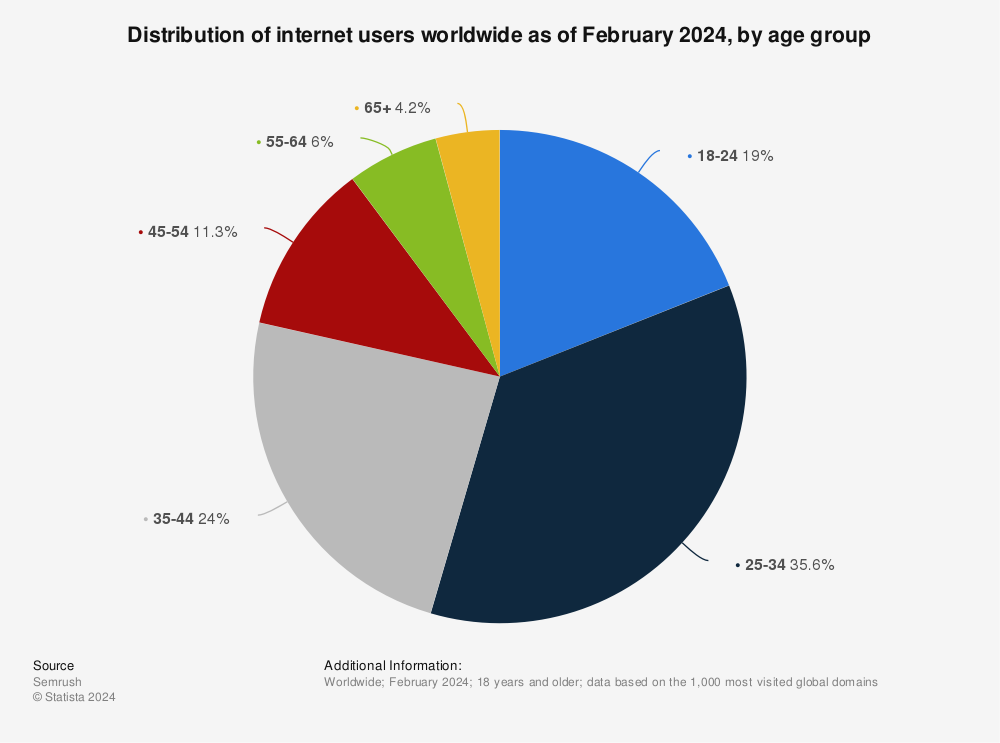Will the elderly be key to driving digital growth?

As the over-65 population across the world continues to grow, this previously tech-shy cohort will prove a greater source of revenues for mobile and internet than ever before. How can telcos continue to ensure inclusivity and fair pricing for their eldest users?
The days of being pocket-dialled by your gran or having to explain email to grandad are over.
According to the UK’s Office of National Statistics (ONS), internet connections in households with one adult aged 65+ have increased by seven percentage points since 2019 to 80%, and Ofcom’s recent Adults’ Media Use and Attitudes survey reports that 73% of over-65s are now using the internet at home, but only 9% do so with a smartphone. Only 8% of adults aged 65-74 (the so-called “young-old”) do not have any internet access at home, but this figure jumps to 26% when it comes to over-75s.
The elderly aren’t stubbornly anti-tech, having matured with many of the devices and services we now take for granted; today’s 65-year-olds were in their mid-30s when the World Wide Web launched, and in their early-50s when the first smartphones were released.
Going hand in hand with this demographic shift is a tipping of the population scales, with the number of those aged 65 or over projected to dramatically increase this century, as people live longer, have fewer children, and increasingly live independently into old age. In the UK, one in five people are now over the age of 65, based on the preliminary results of the 2021 census, outnumbering the under-15s for the first time.
In India, the elderly population will be the main drivers of internet connectivity over the next few years, according to research. Though 18-34 year olds comprise the largest share of all internet users in India at 35%, that figure is dropping, and will fall to 29% by 2025. Over-55s, on the other hand, are growing in market share, and will account for over a quarter of the growth in internet users in this period.
For those moving into old age, the benefits of remaining connected are more than just practical; according to Age UK, loneliness among the elderly can increase the risk of dementia or premature death, while other research suggests that confidence in using technology will boost confidence in other areas too.
Though loneliness isn’t exclusive to the older generations, over one million people aged 65 plus in the UK describe themselves as always or often feeling lonely, and one in eight feel cut off from an increasingly digital society.
From supermarket self-checkouts to public services administered digitally, more and more daily services that older users depend on are moving online. Though this no doubt improves efficiency and saves on costs, this can be alienating to those without the requisite digital skills.
This doesn’t necessarily mean that every customer of a certain age is particularly vulnerable but, as defined by the FCA’s guidance on treatment of vulnerable customers, they may be more likely to experience certain “characteristics of vulnerability” such as poor health and social isolation.
In a 2018 study of internet use among retirees, many talked of consciously avoiding the trappings of online life “as potential diversions from more rewarding activities”. Whether realising or not though, many are now dependent on telehealth services.
Equally, non-users might feel intimidated and anxious with new, unfamiliar technology, particularly when it comes to device security; studies suggest that older users are particularly vulnerable to online scams, with over-60s in the US losing a total of $650 million to scams between 2014 and 2019.
Apart from reducing their capacity to keep connected, a lack of tech skills or confidence risks cutting off those who choose – or need – to remain in work, particularly as the retirement age keeps increasing.
Individuals who have basic or above basic overall digital skills by age group, % of age group (2019)
“We had serious concerns about soaring bills for loyal landline customers. This was hurting people who rely on their landline, many of whom are elderly” according to Jonathan Oxley, Ofcom’s Competition Group Director.
Many leading MNOs already have social tariffs in place for those on pension credit, and offer reduced prices for packages and hardware. Others take things further by offering one-to-one training schemes, such as Vodafone’s Digital Champions programme, which provides help for seniors via trained staff and volunteers from Age UK.
A number of smaller CSPs cater to more specialised services; Simple Telecoms is one of many providers offering basic packages catering to elderly customers. Cloud Guardian, its “ground-breaking” VoIP telephone service, uses Single Order Generic Ethernet Access (SoGEA) to make calls without the need for a copper phone line, automatically blocking nuisance callers, and ensuring number portability for customers who may struggle to remember a new phone number.
Ofcom concedes that elderly customers, particularly those with special accessibility requirements, will need “additional support” during the UK’s impending PSTN switch-off, which will see VoIP take over all landline services, rendering many vulnerable users’ independent living devices useless.
The importance of ensuring digital inclusion will only increase as global demographics continue to skew towards the elderly, and technology continues to advance and encroach on more of our lives. Technology has the potential to reduce loneliness among older adults and empower them to connect – provided they have the support to adapt.
Telcos must meet their customers where they’re most comfortable, explaining the benefits of services through both online and offline channels – after all, offering a range of discounts for older customers is totally moot if these offers are tucked away at the bottom of some product webpage.
Going one step further, specialised learning and support programmes can help to generate interest and assuage any concerns older customers may have, be they real or imagined.
When it comes to billing, many users continue to pay high rates when their contract has ended, penalising those who may not know they’re entitled to a reduced bill once their handset is fully paid off. Timely communications as their contract end date approaches is vital, ensuring that customers don’t end up paying more for remaining loyal.
Digital skills can be a gateway to more than just communications – they can open up the entire ecosystem of services and experiences to users who may once have been unable or unwilling to make the jump online. Telcos must invest more in access to training for users and adopt policies that make digital technologies accessible across populations, as well as affordable, including discounts and subsidies for older customers.
Contact us now to find out how our Enterprise Product Catalogue can help you create special price plans for the elderly and vulnerable.


.jpg) Source
Source